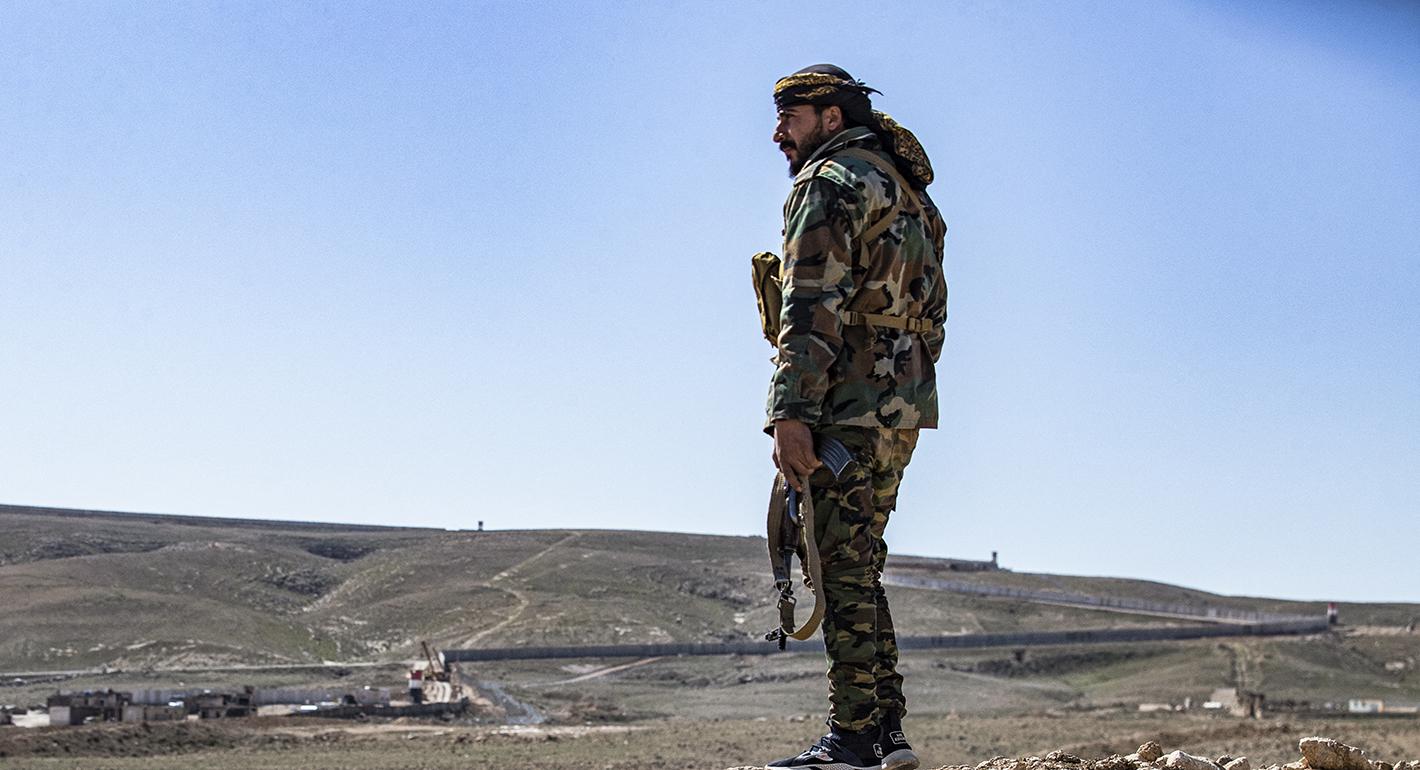Since 2011, the conflict in Syria has transformed the country’s border areas. In most of these, Syrian sovereignty is now contested to varying degrees among local, national, and regional actors. These dynamics have led to a situation in which a variety of political centers (other than Damascus) have come to exercise influence over borders. Though there are stark differences among these border regions, they all have in common the fact that they are entities outside Damascus’ control, each with its own economy, security, and even ideology—effectively, de facto cantons.
Controlling Syria’s borders has always been a central aspect of the Assad regime’s power. However, given its loss of influence over many of its borders—added to its merely tentative authority over those border areas controlled by allies—what we are seeing today in the country is a significant long-term transformation in the way Damascus operates. It is unlikely that the regime will restore state sovereignty over these border areas anytime soon. Rather, in the coming years developments there are likely to be determined by local and regional actors, and the interactions between them.
Multiple variables will affect the outcome of these interactions. These can be placed into three broad categories: demographics, or more specifically the fate of the displaced and refugees; markets, or what might be called cross-border economic relations; and security. Given the likelihood that Damascus will be unable to restore full control over its border regions, the question is whether efforts to resolve the Syrian conflict should not encompass a wider range of local and regional actors, while also focusing on demographics, markets, and security? Such questions are what a group of Carnegie scholars hope to address in a forthcoming paper.
The movement of people has played a major role in border regions, notably the north. But these trends have also been characterized by a paradox. The regime has pursued a policy of reducing hostile populations under its control by allowing for the creation of large areas where it has a limited presence, or none at all—such as Idlib Governorate near the Turkish border. But this has also undermined the state’s sovereignty over these territories. Northeastern Syria, where the regime has allowed an entire segment of its population, namely the Kurds, to create a self-governing entity is equally representative of such an approach.
As cross-border markets and economic ties have developed, they have transformed, and in some cases even replaced, prewar market relationships in particular areas. Control over such relationships had also constituted a major factor in the Syrian state’s power before the conflict. New economic ties, as seen in the town of Sarmada, for instance, have tied border regions more closely to Türkiye than to Damascus. This development represents another aspect of the deterioration in Syrian state sovereignty over these areas.
Security, however, remains the main issue that will shape the future of Syria’s conflict in the country’s border regions. Over the last decade or so, Syria has seen the emergence of a number of parallel security orders—Turkish, Iranian, and American—each within specific geographical zones of operation and influence. While these may differ from each other, they too have all greatly eroded the sovereignty of the Syrian state and regime.
The Turkish security order has established effective self-defense zones and reshaped local power structures in parts of the north where the Turkish military has a presence. The more fluid Iranian model has connected Iraq to eastern and southern Syria and Lebanon through the promotion of local, pro-Tehran militias. The example of the Qa’im-Bukamal border crossing with Iraq has shown how Iran uses such passageways for its militias, allowing it to exert regional influence, even as it expands its sway over armed Arab tribal groups in the area. The United States also has a presence in eastern and northeastern Syria, as well as in the Tanf base near Jordan, which began as part of American participation in the coalition to fight the Islamic State group. For the foreseeable future, Damascus’ ability to restore its sovereignty in all these border locations will be virtually nonexistent.
The conflict in Syria has completely destroyed the country’s national framework, with local-regional having risen on its ruins. These ties have expressed themselves across all of Syria’s borders. The established approaches to resolving the crisis are therefore no longer useful today. The Geneva process, which assumed a political transition would take place within a Syrian national framework, is unrealistic. Not even the local deals that emanated from the security-focused Astana process between Iran, Russia, and Türkiye are effective. Neither takes into account the radical transformations that have shaped Syria’s political, social, and security structures since the war began. Until a new approach is tried, one that includes an effective local element within new regional equations, Syria will remain in limbo, at the expense of both its sovereignty and a society devastated by war.







